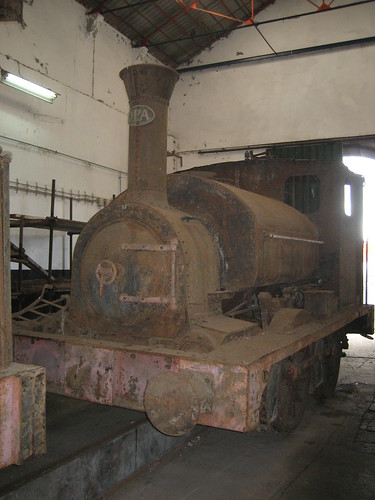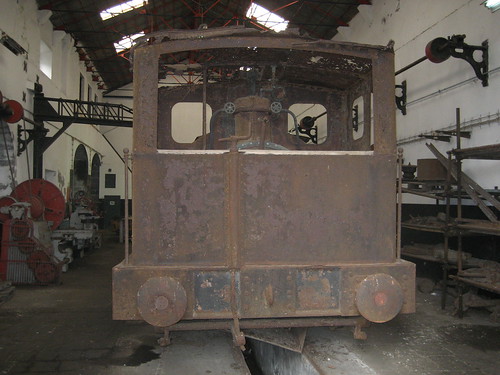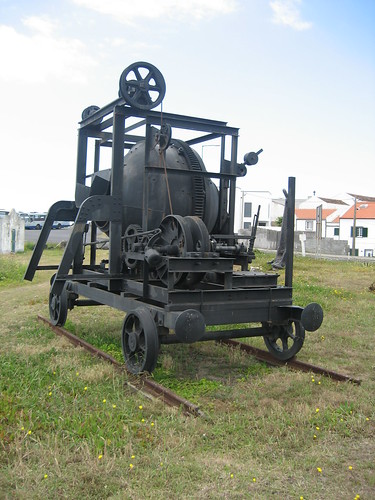| Many years ago I read an account in the British railway press of some
broad gauge locomotives that were supposedly still in existence in the
Açores. ln 2008 I decided to the visit these Portugese islands, located
in the Atlantic Ocean, and I decided to see what I could find out about
these locomotives. The only information I could find was just one web
page with a poor picture and no up-to-date information. ln constructing the Great Western Railway in the United Kingdom, lsambard Kingdom Brunel chose a gauge of 7 feet 0¼ inches. This wide gauge produced a very stable roadbed but there were difficulties at the many locations where the broad gauge interchanged with the standard gauge (4 feet 8½ inches). Standard gauge had a larger network of lines and, to make a long story short, the broad gauge Great Western Railway was converted to standard gauge by 1892. At this time the broad gauge locomotives were either cut up or converted to standard gauge. A few were retained for a short time as historic exhibits but these were also cut up in the early part of the twentieth century leaving no broad gauge survivors. A broad gauge replica has been built and operates at the Didcot Railway Centre.  A view taken in the sixties or seventies period which illustrates the work being undertaken by the railway at that time. ln all, three locomotives, all 0-4-0 tank, worked at Ponta Delgada: 1 - built by Neilson, Reid & Co. in 1 861 (serial number 697) 2 - built by Black, Hawthorne 1880-1888 (serial number 766) 3 - built by Falcon Engineering, Loughborough, in 1888 (serial number 165) Number 1 is believed to have carried a plate "J & C Rigby, Holyhead Harbour Works 1861" which suggests thtt it was used at Holyhead before being shipped to Ponta Delgada. 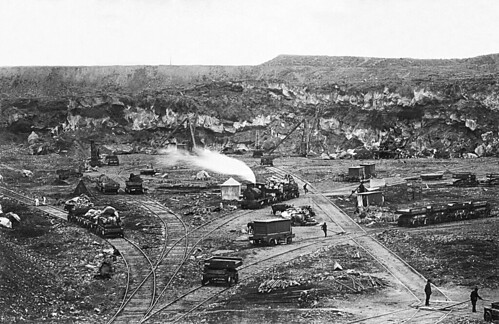 The quarry showing the extent of the railway operations. A steam locomotive can be seen although it appears that oxen were also used tomove the wagons around. Several types of four-wheel railcars can be seen as well as rail-mounted cranes. Many switches can be seen but small wagon turntables are also in use (bottom right) Ponta Delgada is the main town on the island of Sao Miguel and, on our final approach, we flew.over the port and I wondered if the locomotives were in one of the buildings I could see. Walking down to the port, I found an encouraging clue. ln the works yard, in plain view from the street, was a cast iron water tank with "J & C Rigby" and "Harbour Works Holyhead" cast on the sides - the date "1862" was even cast on one side. 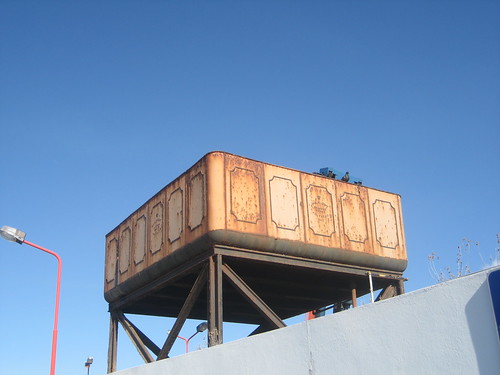 The water tank reads "J.& C. Rigby, Harbour Works, Holyhead, 1862". The tank is broad gauge but the pigeons are standard gauge!
The plans are somewhat vague. There was a proposal from a British group. a few years ago. They offered to restore the two locomotives on condition that one be returned to the United Kingdom. The Port Authority rejected this because they want to see both of them retained, and possibly used, in Ponta Delgada. There is another broad gauge survivor on San Miguel. There is a cement mixer standing on a short stretch of broad gauge track next to a traffic circle on the road to the airport. ln spite of its exposure to the wet sea air, it seems to be in remarkable condition. So there they are today. They are what is believed to be the only remaining Brunel gauge locomotives in the world, although they never worked on Brunel's railway, together with an unusual broad gauge cement mixer. Ponta Delgada would like to see these used to full tourists on a short railway. However, for the present, the best that can be hoped for is that they stay inside in the dry. Bytown Railway Society, Branchline, May 2010. |
Home Articles

